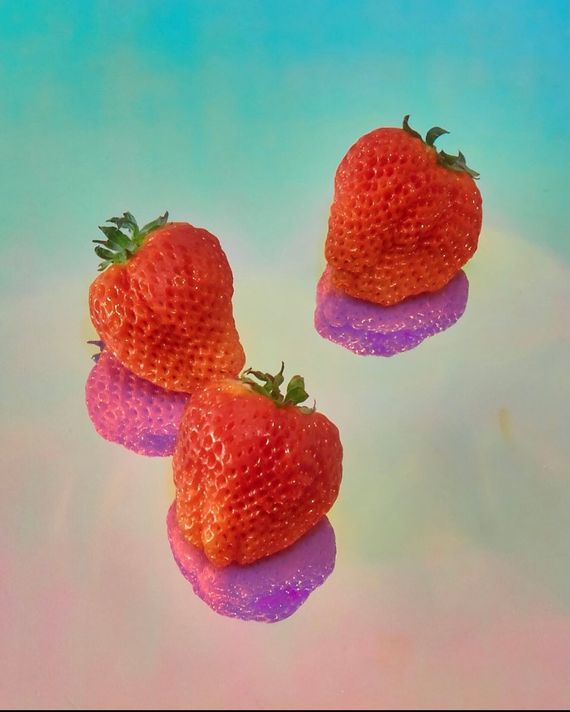
Perhaps you follow luxury fruit news, and you are familiar with Oishii Berry’s Omakase Strawberry, which is a strawberry unlike any other berry that exists. The company website tries to explain, but it is difficult, because there is no known comparison: They are “an experience like no other.” They are “so pure, so intense, and so sublime” that they are “transformative.” They are also, at a minimum, $5 each, unless you want the large model, in which case, they are $6.25 apiece. To put that in perspective, each berry costs more than an entire package of Pillsbury biscuits, but less than the Hope Diamond.
They made their U.S. debut in 2018, and have appeared mostly inside New York City restaurants. But soon, if Oishii Berry’s business strategy holds, the berries will be everywhere: The company recently raised $50 million in series A funding, which it will use to grow the rare fruits at scale. They will be the Tesla of vertically farmed strawberries. Here is what you need to know.
We are talking about strawberries?
Yes.
And they are $5 each?
Yes, unless you want the large ones, which, again, are $6.25 each.
For regular strawberries?
These are Omakase strawberries, a varietal previously found only in the foothills of the Japanese Alps in winter. They have twice as much sugar content as the average American strawberry, an “airier texture,” and “unexposed seeds.” They are “creamy,” and also profoundly aromatic: “If you leave a single berry unwrapped in a closed room for a few minutes,” the Spectator promises, “the room will be full of strawberry fragrance on your return.”
So these berries come from Japan?
No. These berries come from New Jersey.
No disrespect to Jersey, but … that isn’t exactly Japan.
The Oishii Omakase berries, chosen for their “exceptional sweetness” from a field of 50 different Japanese varietals, are vertically farmed, indoors, in New Jersey under excruciatingly specific conditions calibrated to exactly mimic their natural Alpine habitat. “We had experts from Japan giving us insights on what kind of temp, humidity, and levels of CO² and wind speed we should be targeting inside the farm,” recalled Hiroki Koga, Oishii’s founder and CEO.
But the wind speed is only the beginning: Oishii also uses a “proprietary indoor natural pollination method conducted by bees,” explains the website Food Navigator. (“Machine learning” is also involved, somehow.) Their working conditions are reportedly excellent. “These bees are very happy; they live in harmony with our farmers and robots,” Koga has promised. There are very few available details about exactly how any of this works, but it uses zero pesticides and investors say it is the future.
Investors?
Yes. Last week, Oishii closed a $50 million round of VC funding, which it will use to expand its footprint and range of berries. Strawberries, apparently, are the “holy grail” of vertical farming, and the fact that the company has figured out how to do it means that Oishii is poised to “quickly revolutionize agriculture as we know it.”
Okay. I’m sold. How do I get some?
Don’t you want to know if they’re any good?
Sure!
“A lot of people tell us that our strawberries taste like strawberry candy,” says Koga. Kazushige Suzuki, head chef of Sushi Ginza Onodera, told Eater he hadn’t found that “remarkable creamy texture” in a strawberry since leaving Japan.
But don’t just take it from them. Our own Adam Platt once tried the berries, which had been hand-delivered to him at the offices of New York Magazine. “They’re diabolically uniform,” he explains. “Much more tender than your average strawberry. Every one is the same. You would call it monotonous, except they’re really quite delicious. Why not just keep eating them?”
So you’re saying these are a “buy”?
“I don’t know if I’d do that,” cautions Platt. “For the record, I’m happy with Driscoll’s. The Driscoll’s stuff in a clamshell is pretty impressive.” He does, however, feel strongly that they are “good.”
How do I get some?
The berries are now available for pickup at a small handful of restaurants — Olmsted, Brooklyn Kura, and Café Kitsuné — but they must be reserved days, or weeks, in advance. (Currently, the next-available berries will arrive at Café Kitsuné on March 24.)
Are they the future of strawberries?
Koga likes to compare his strawberries to Tesla’s cars.
Oh, no.
It is exhausting, we understand, but you’re the one who asked about the future! So, consider Tesla.
The Tesla of strawberries.
The point is this: Tesla has quickly moved from manufacturing niche cars into the automotive mainstream. Likewise, Oishii berries may be an ultraluxury now, but that is not the long-term plan: “We’re talking about a much nearer future,” Koga warns, “where this will be in the single digits, at which point anyone can buy these strawberries in their local supermarket.”




